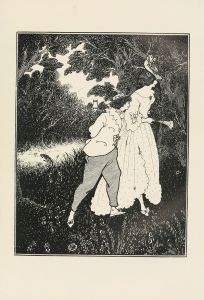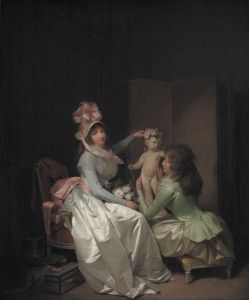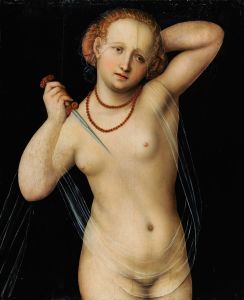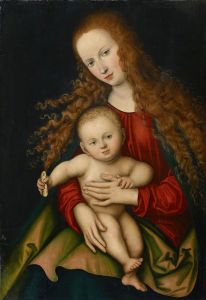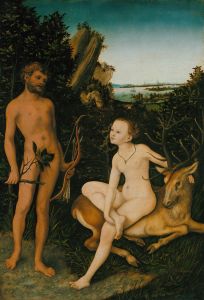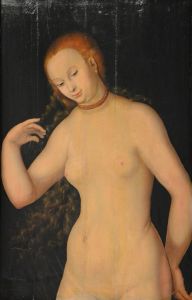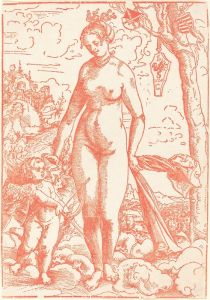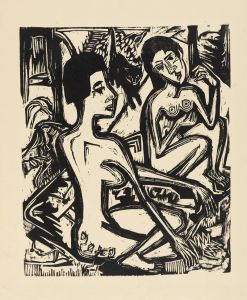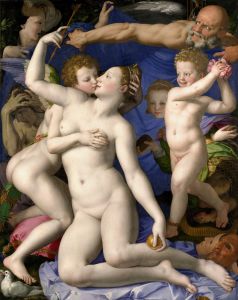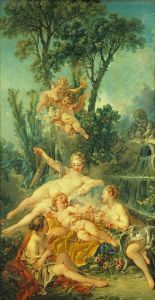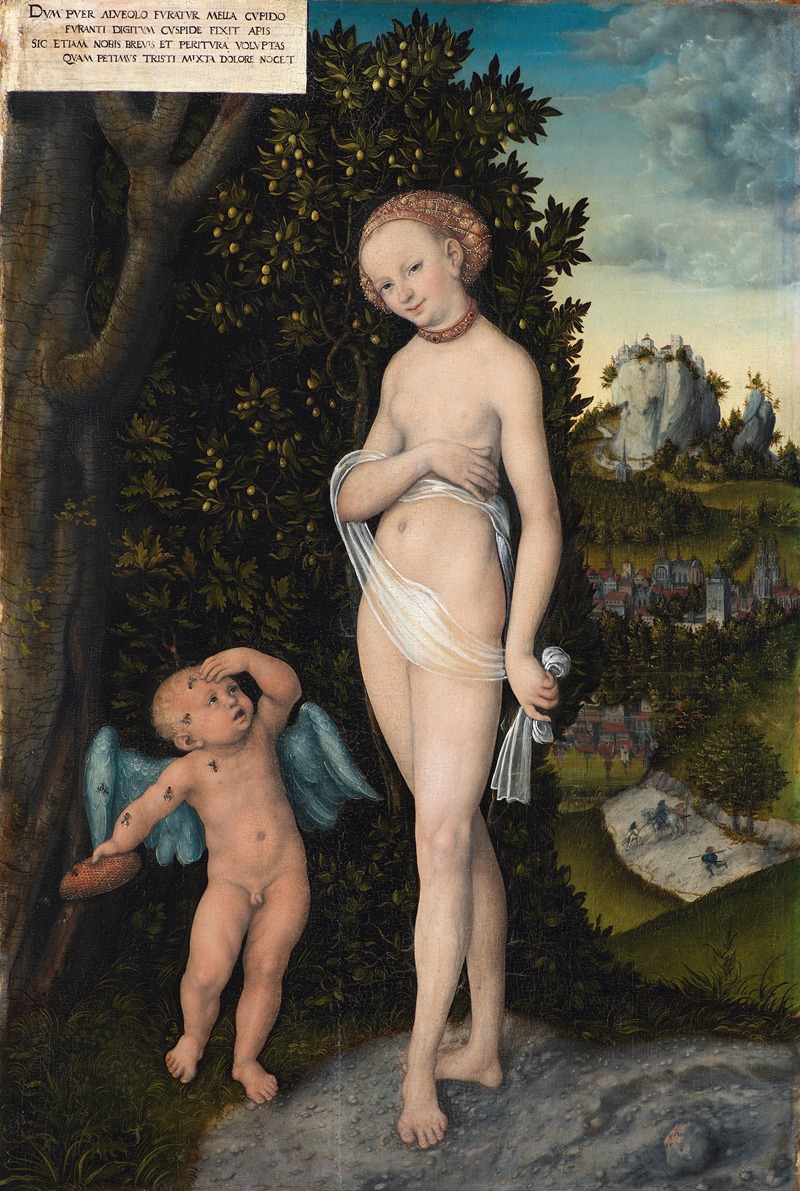
Venus with Cupid Stealing Honey
A hand-painted replica of Lucas Cranach the Elder’s masterpiece Venus with Cupid Stealing Honey, meticulously crafted by professional artists to capture the true essence of the original. Each piece is created with museum-quality canvas and rare mineral pigments, carefully painted by experienced artists with delicate brushstrokes and rich, layered colors to perfectly recreate the texture of the original artwork. Unlike machine-printed reproductions, this hand-painted version brings the painting to life, infused with the artist’s emotions and skill in every stroke. Whether for personal collection or home decoration, it instantly elevates the artistic atmosphere of any space.
"Venus with Cupid Stealing Honey" is a painting by the renowned German Renaissance artist Lucas Cranach the Elder. Cranach, who was a leading figure in the Northern Renaissance, is celebrated for his portraits, religious subjects, and mythological scenes. This particular work, created around 1530, is an exemplary piece that showcases Cranach's skill in blending classical mythology with the stylistic elements of the Renaissance.
The painting depicts the Roman goddess Venus, the embodiment of love and beauty, alongside her son Cupid, who is known for his mischievous nature and role as the god of desire. In this scene, Cupid is shown stealing honey from a beehive, an act that serves as a metaphor for the pleasures and pains of love. The narrative is drawn from classical mythology, where Cupid, after being stung by bees, complains to Venus about the pain. Venus responds by drawing a parallel between the sweetness of honey and the sting of bees to the joys and sorrows of love.
Cranach's depiction of Venus is characteristic of his style, featuring an idealized female form with elongated proportions and a serene expression. She is often portrayed in a state of partial undress, which was typical of Cranach's mythological works, reflecting both the sensuality and the innocence associated with the goddess. The figure of Cupid, depicted as a cherubic child, adds a playful element to the composition.
The painting is notable for its use of vibrant colors and fine detail, particularly in the rendering of textures such as the softness of Venus's skin and the delicate wings of Cupid. Cranach's technique involves the use of oil on panel, a medium that allows for rich coloration and intricate detailing, which are evident in this work.
"Venus with Cupid Stealing Honey" is part of a broader tradition of Renaissance art that sought to revive and reinterpret classical themes. Cranach, who was a contemporary of Albrecht Dürer and a court painter to the Electors of Saxony, was instrumental in bringing these themes to Northern Europe. His works often reflect the humanist ideals of the time, emphasizing beauty, nature, and the complexities of human emotion.
The painting is housed in the Gemäldegalerie Alte Meister in Dresden, Germany, where it is part of a significant collection of works by Cranach and other Renaissance masters. The gallery provides context for the painting within the broader scope of Cranach's oeuvre and the artistic movements of the period.
Cranach's "Venus with Cupid Stealing Honey" continues to be admired for its artistic merit and its insightful commentary on the nature of love. It remains a valuable piece for understanding the cultural and artistic milieu of the 16th century, as well as Cranach's contribution to the development of Renaissance art in Northern Europe.





